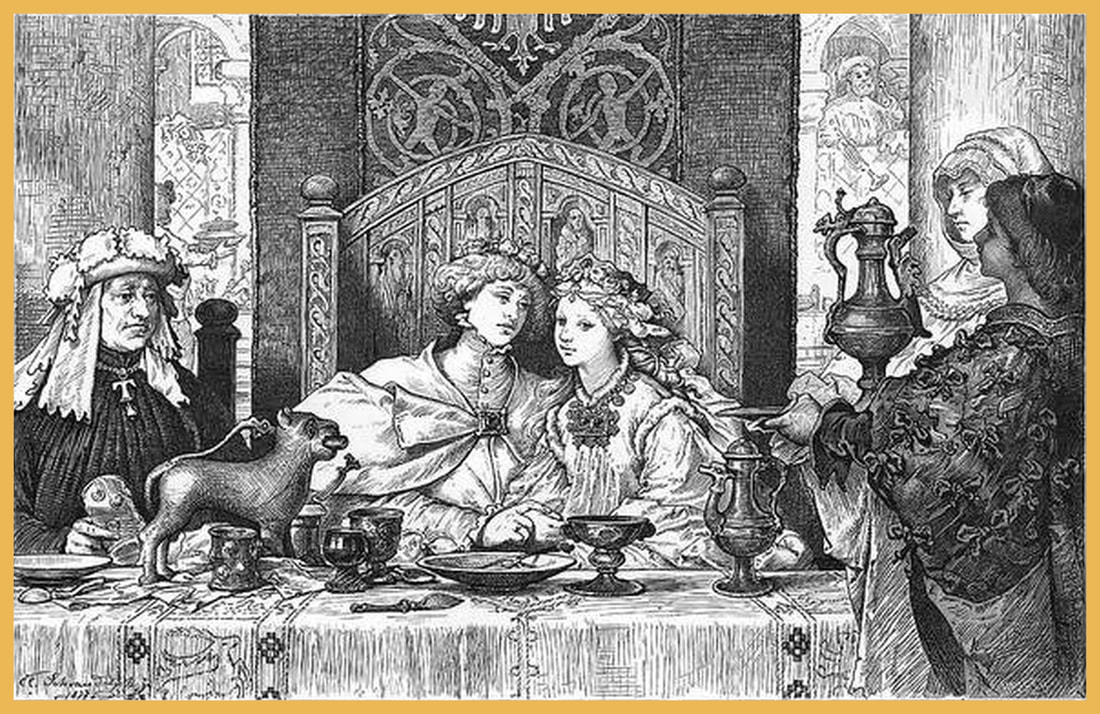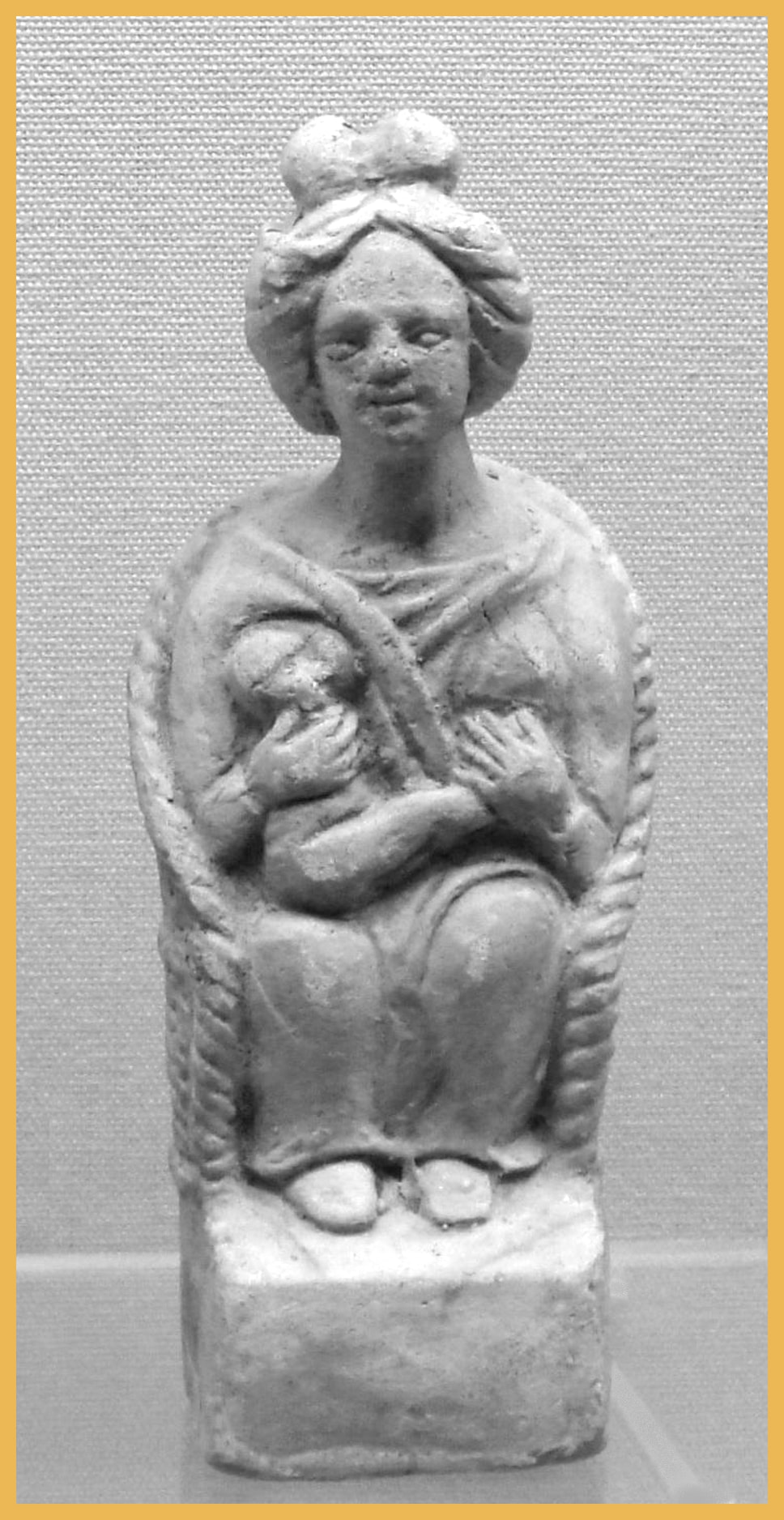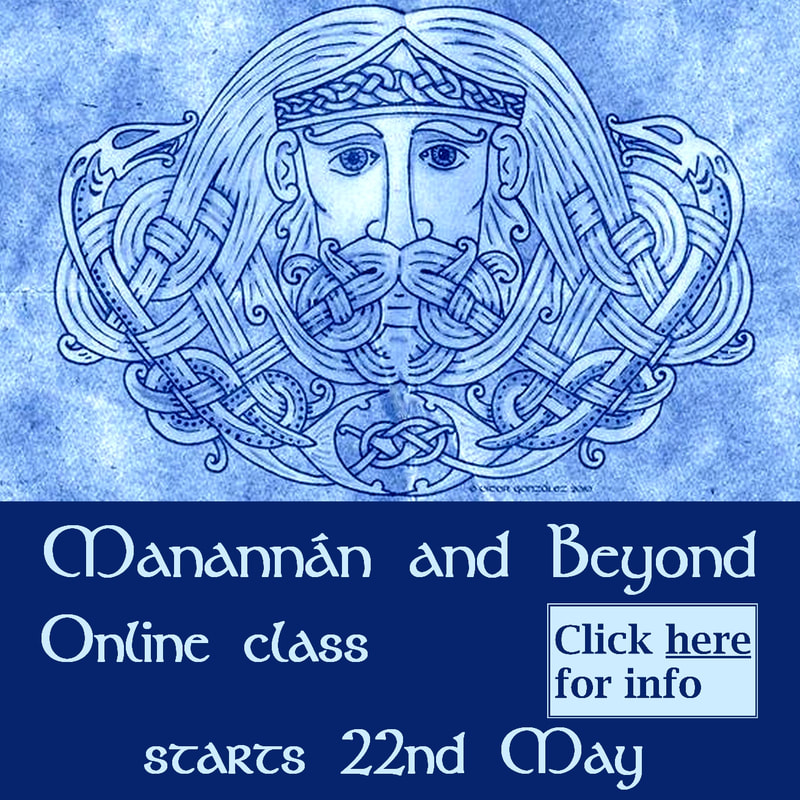Although the Mabinogi manuscripts that have survived date to the 14th century, dating the stories themselves is a lot harder. In the form that we find them, they may go back a couple of centuries earlier, but it’s much harder to date the material they came from. There are enough common themes and cognate names that are shared with Irish material several centuries older to suggest some common ancestry. There is enough in common with other with Indo-European myth, generally, to suggest that these stories have very long roots.
The “Mab” in Mabinogi means son, or boy and there are a couple of Celtic deities with related names: Maponos, and Mabon ap Modron. (Here’s a link to an in depth look at these deities.) Mabon ap Modron (divine son of the divine mother) has associations in Welsh-language lore with being a divine prisoner, and he is an important character in Culhwch and Olwen, which is in the wider collection of The Mabinogion.
The stories have a theme of mothers and sons and one theory is that many of these stories were originally stories about Mabon/Maponos. It has also been suggested that “Mabinogi” might imply that these are stories for the instruction of boys – specifically for young noblemen who would have been taught by bards, and who would have been expected to learn about the responsibilities and dangers of leadership. I believe that both these ideas have a lot of merit, and there is no reason that they can’t both be true. Probably, the more deeply mythic themes of motherhood, male youth, and kingship represent an older layer. This may have been developed, over time, into stories which would require young men to think deeply about honour, marriage, and leadership. I think it is important to keep these ideas in mind, when reading the Four Branches.
Women’s themes play a big part in The Four Branches. There is quite a bit of mistreatment of women, and there is also some quite assertive behaviour by some of the females characters. For the most part, the females don’t sit in towers waiting to be rescued, nor do their lives revolve entirely around producing heirs for their mates. A theory which has not been widely accepted is that the “author” of The Mabinogi was a woman. The reasons for discarding that theory have less to do with disbelief that a medieval woman could be the author, and more to do with the lack of evidence. It's possible that The Mabinogi doesn’t exactly have an author. It almost certainly came down through the oral tradition, and how much responsibility any one individual had for the form in which we know it, is difficult to discern, although its likely that one individual was responsible for pulling The Four Branches together into the version we know. Still, referring to that person as “editor” or “redactor” might be more accurate than “author”.
Although The Four Branches forms a loosely chronological narrative, it is worthwhile to compare the branches to one another, and perhaps track a progression of ideas as the cycle progresses, rather than just look at them as some kind of saga. There are a number of themes which recur, including: weddings; motherhood; mothers losing their sons; large, futile battles; honour; magic; and deception. It’s worth noting how each of these themes is approached.
To take one example, there is a wedding in every branch, but they are each very different.
In The First Branch, Rhiannon appears in Pwyll’s kingdom and proposes marriage to him. They encounter some difficulties on the way to becoming man and wife, but work together to achieve it. Their relationship encounters more problems, but Pwyll remains essentially loyal, if sometimes a bit ineffective.
| In The Second Branch, Branwen, sister of King Brân, is given to an Irish king, seemingly without even being consulted. As in The First Branch, there is trouble at the wedding feast. In this case, it sets Branwen and her husband, Matholwch, up for trouble which ends in widespread tragedy. Branwen does attempt to help herself, but is essentially portrayed as a victim. The Third Branch finds Rhiannon, now a widow, betrothed to Manawydan by her adult son. Fortunately, she and Manawydan like each other when they meet and have a happy marriage, although they have a fairly harrowing adventure together. In The Fourth Branch, we meet Lleu – a young man whose conception seems to have been achieved through magic or deceit. His mother, Arianrhod, refuses to betroth him to a woman, so his magician kinsmen, Math and Gwydion, create a wife for him out of flowers. She soon falls in love with someone else, tries to arrange Lleu’s murder, and gets turned into and owl by Gwydion. |



 RSS Feed
RSS Feed




